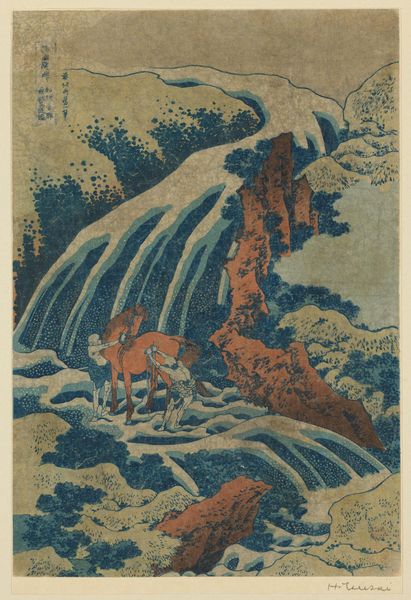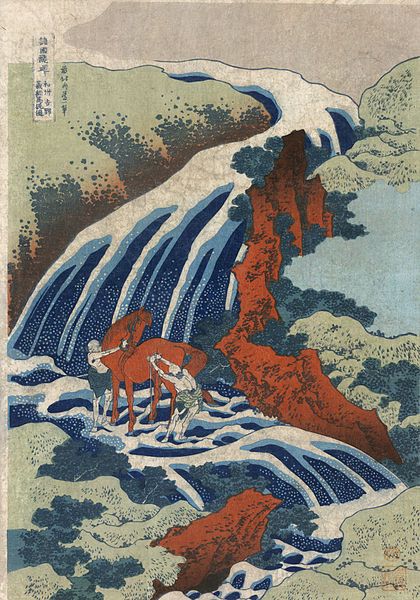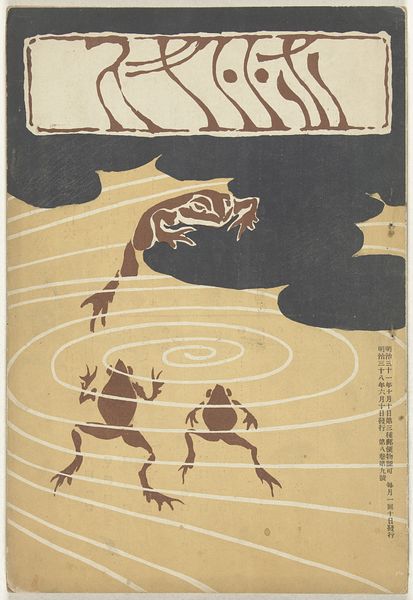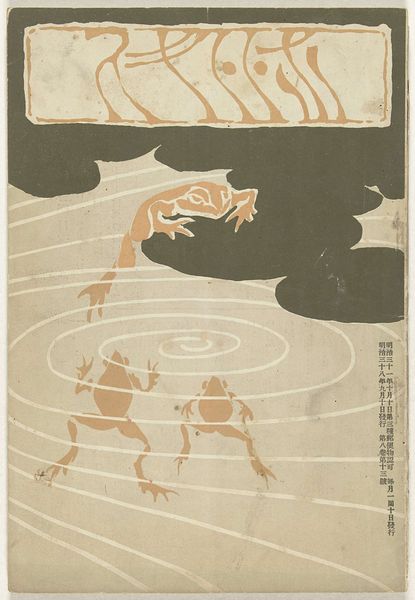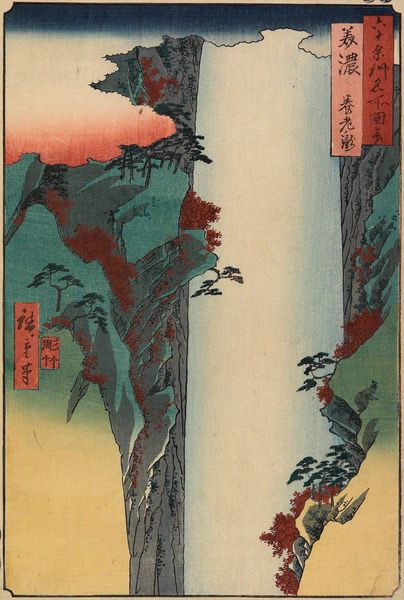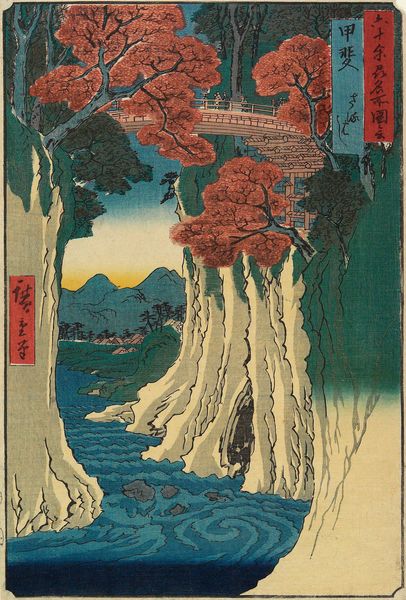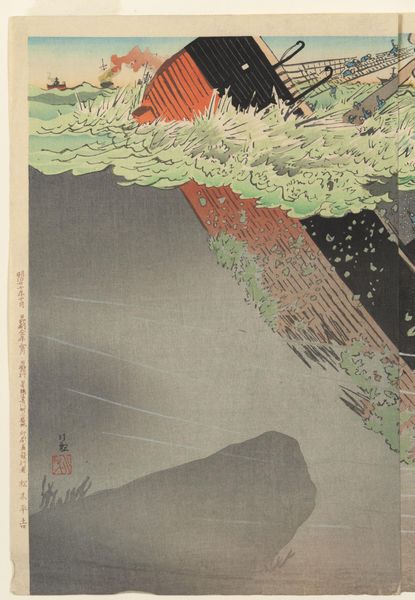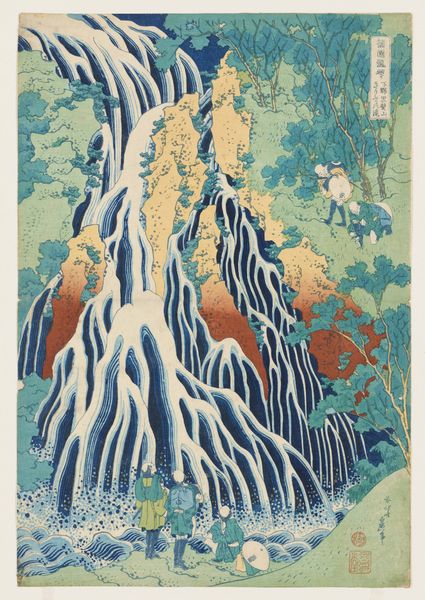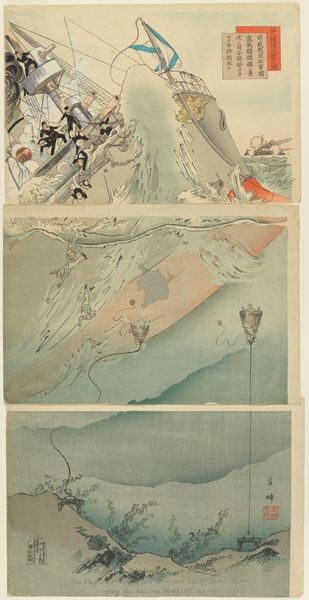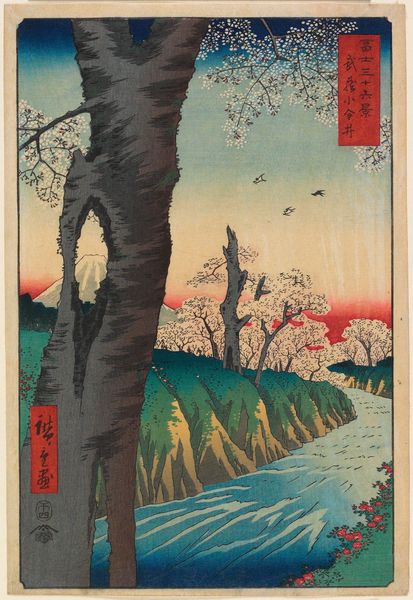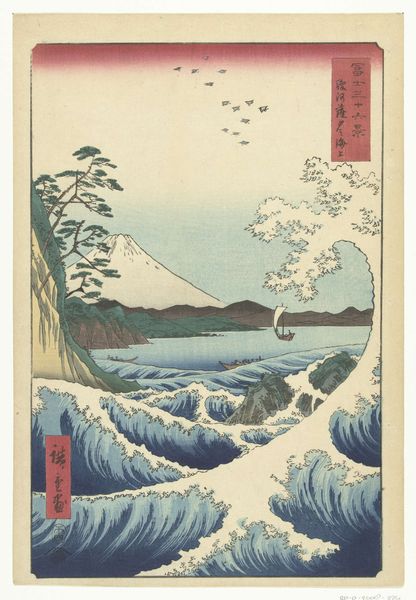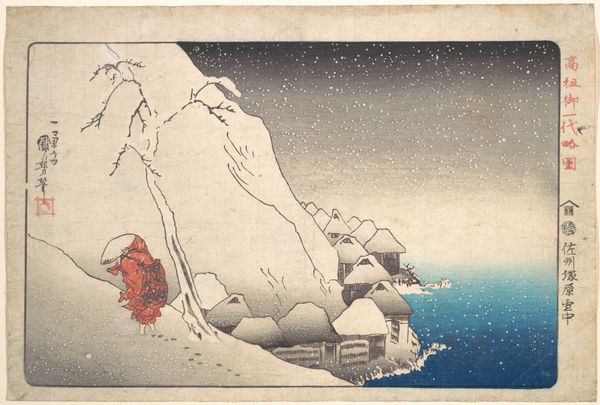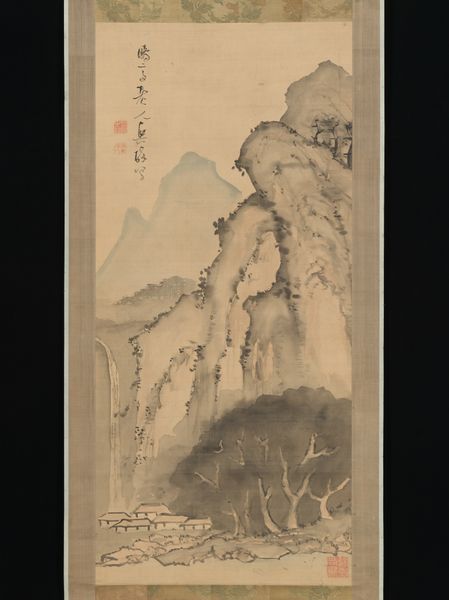
De waterval waar Yoshitsune zijn paard waste te Yoshino in de provincie Yamato 1830 - 1834
0:00
0:00
print, watercolor, woodblock-print
#
water colours
# print
#
asian-art
#
landscape
#
ukiyo-e
#
watercolor
#
coloured pencil
#
woodblock-print
#
watercolor
Dimensions: height 362 mm, width 246 mm
Copyright: Rijks Museum: Open Domain
Curator: We are looking at a woodblock print by Katsushika Hokusai, titled "De waterval waar Yoshitsune zijn paard waste te Yoshino in de provincie Yamato." It’s from sometime between 1830 and 1834. Editor: The composition immediately strikes me. The waterfall dominates the scene, but it's stylized, almost ornamental in its cascading form. There's a definite play between the naturalistic setting and the abstract rendering of water. Curator: Indeed. Hokusai's treatment of the waterfall reduces nature to almost pure design. Look closely at the linear quality, the arrangement of the water—it creates a rhythmic pattern across the surface. Consider how the colour blocking and the absence of shading lend the scene to this almost fantastical depiction of a moment in history. Editor: Is this based on historical fact? Who is Yoshitsune, and why is he washing his horse? The print offers a glimpse into Japanese folklore, a reflection of social values around heroism and equestrian nobility perhaps? Curator: Minamoto no Yoshitsune was a prominent military commander of the Minamoto clan during the late Heian and early Kamakura periods. The act of washing his horse here underscores the physical prowess and ritual purification central to his martial identity. Furthermore, it touches upon the role of landscape in legitimizing political figures and narratives. Editor: But Hokusai’s departure from strict realism serves a purpose, doesn't it? The simplification, the intense color contrast—the ochre rocks against the intense blue water—everything contributes to the graphic impact. He’s elevating the historical narrative to the realm of legend through visual vocabulary. Curator: Precisely. Hokusai leverages printmaking to create not a documentary, but a compelling symbol, focusing on the graphic strength inherent within ukiyo-e tradition. The tension between representation and abstraction allows the work to transcend pure illustration. Editor: The print leaves me pondering how art reinterprets historical memory—the event fades, the symbol remains, and how we can use the present to analyze the values assigned to the past. Curator: Absolutely. I, on the other hand, leave contemplating the visual ingenuity with which Hokusai encapsulates the relationship between humans, animals, and landscape—purely on compositional terms.
Comments
No comments
Be the first to comment and join the conversation on the ultimate creative platform.
